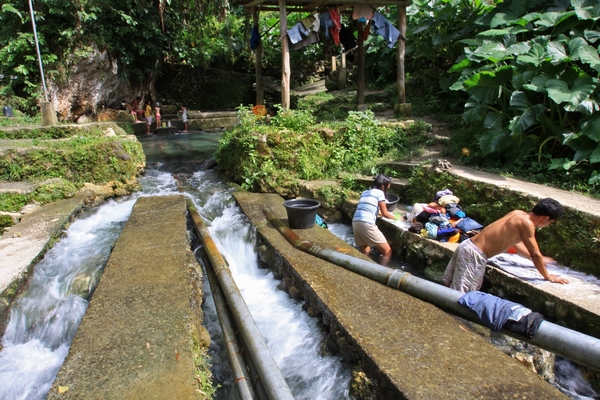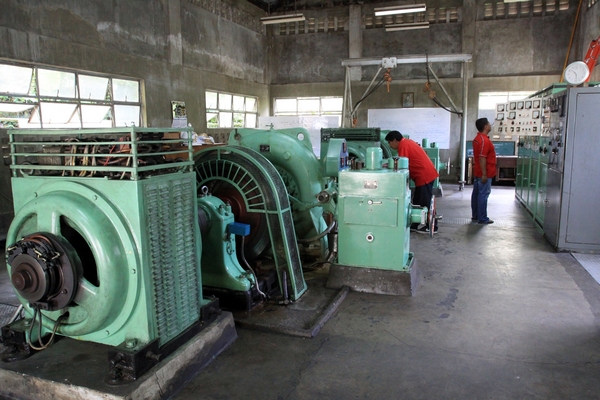Renewable energy: Paving the way for Cebu’s future

The Matutinao hydropower plant in Barangay Matutinao, Badian town of southern Cebu is where one of the mini-hydropower plants of Cebu Electric Cooperative I (Cebeco I) is located.
(PART 1)
Cebu’s ever-booming economy has become more evident each day with new skyscrapers dotting its skyline.
But with every construction of a building, a home, or a road, and for each expansion of a business comes a corresponding demand for power, a resource that sadly remains wanting.
In order to fulfill projected demands in the coming years, the Department of Energy (DOE) has called for more investments in the power generation sector.
However, a running debate on what type of power source should government push for that investors should tap continues to run for a decade.
Ten years ago, the Philippine government saw the need for renewable energy as an alternative to traditional fossil fuels with the passage of Republic Act No. 9513, or the Renewable Energy Act of 2008 and its implementing rules and regulations in 2009.

The river in Barangay Basak, Badian town (above photo) in southern Cebu powers the Cebeco 1 hydropower plant (below photo) in the barangay.
The law is aimed to encourage the development and use of renewable energy resources as tools to prevent or reduce harmful emissions; thereby balancing the goals of economic growth and development with the protection of health and the environment.
Renewable energy resources, or simply “renewables,” refer to energy resources that do not have an upper limit on the total quantity to be used. These include biomass, solar, wind, geothermal, ocean energy, hydrogen and hydropower, among others.
“The DOE is always promoting for renewable. The policy of the DOE is to be technology-neutral. Anybody who wants to invest will be considered,” said Engr. Saul Gonzales, director of the DOE-Visayas Field Office (VFO).
Aside from DOE, the Energy Regulatory Commission (ERC), and the National Renewable Energy Board are mandated by law to implement RA 9513 as the Philippines seeks to achieve energy security by reducing reliance on fossil fuels and avoiding the fluctuating prices of oil in the global market.
The law also aims to increase the use of renewables by developing the country’s capabilities in the use of renewable energy and promoting its efficient and effective applications by giving fiscal incentives like the following: income tax holiday; duty-free importation of renewable machinery, equipment, and materials; special realty tax rates; net operating loss carry-over; corporate tax rate of 10%; accelerated depreciation of plant, machinery, and equipment; 0% value-added tax rate; tax exemption on carbon credits; and cash incentive for missionary electrification.
But inspite of these government incentives, the high cost of technology; non-competitiveness among market players; non-viable renewable energy markets; inaccessible financial packages; and the lack of social acceptability hound industry players, regulators, and other stakeholders.
In Cebu, only two types of renewable energy technologies are operated by power firms – solar and hydropower. All the renewable plants are located on the southern side of the island.
Hydropower plants
DOE-VFO records show that Cebu has three small hydropower plants, with a combined capacity of 1.72 megawatts (MW).
The plants are owned and operated by the Cebu Electric Cooperative (Cebeco) I — the first rural electric cooperative organization in Cebu province.
In Barangay Mantayupan, Barili town, Cebeco’s hydropower plant, commissioned in 1985, has a capacity of 500 kilowatts; while the firm’s second plant in Barangay Matutinao, Badian town, commissioned in 1990 has a 720 kilowatt capacity.
Cebeco’s third and last hydropower plant is in Barangay Basak, also in Badian town.
Inaugurated in 2013, it has a capacity of 500 kilowatts and is the newest of the three facilities with an investment value of P70 million.
An official from the Energy Resource Development and Utilization Division (ERDUD) of the DOE-VFO told CDN that while hydropower is a reliable source of renewable energy, there aren’t enough rivers and runoff water sources in Cebu that can generate a bigger power capacity.
“Our rivers in Cebu are very small. There are still other rivers that have not been tapped; but it is not as attractive for investors,” said the official who spoke on condition of anonymity for lack of authority from DOE to speak on the matter.
Aside from Cebu’s lack of viable hydropower resources, the development of hydropower plants also entails huge investment, the official said as he estimated the cost to range between P100 – P150 million per megawatt of power.
“It’s very risky for them. And when can they get a return of their investment? It would take very long, several years,” he said.
He further explained that among the several renewable energy technologies, hydropower plants have one of the most reliable plant factor or capacity factor at 85 to 95 percent.
Capacity factor refers to the plant’s availability to deliver its rated power capacity.
He said that other renewables, such as solar power plants, have a much lower capacity factor of only 20 percent due to conditions like rains and cloudy skies.
The ERDUD has recently identified the southern town of Malabuyoc as another source of hydropower in Cebu.
Based on the agency’s research, the town can potentially generate another 500 megawatts. But there are no investors interested to tap this power source to date.
(To be continued)
Disclaimer: The comments uploaded on this site do not necessarily represent or reflect the views of management and owner of Cebudailynews. We reserve the right to exclude comments that we deem to be inconsistent with our editorial standards.

